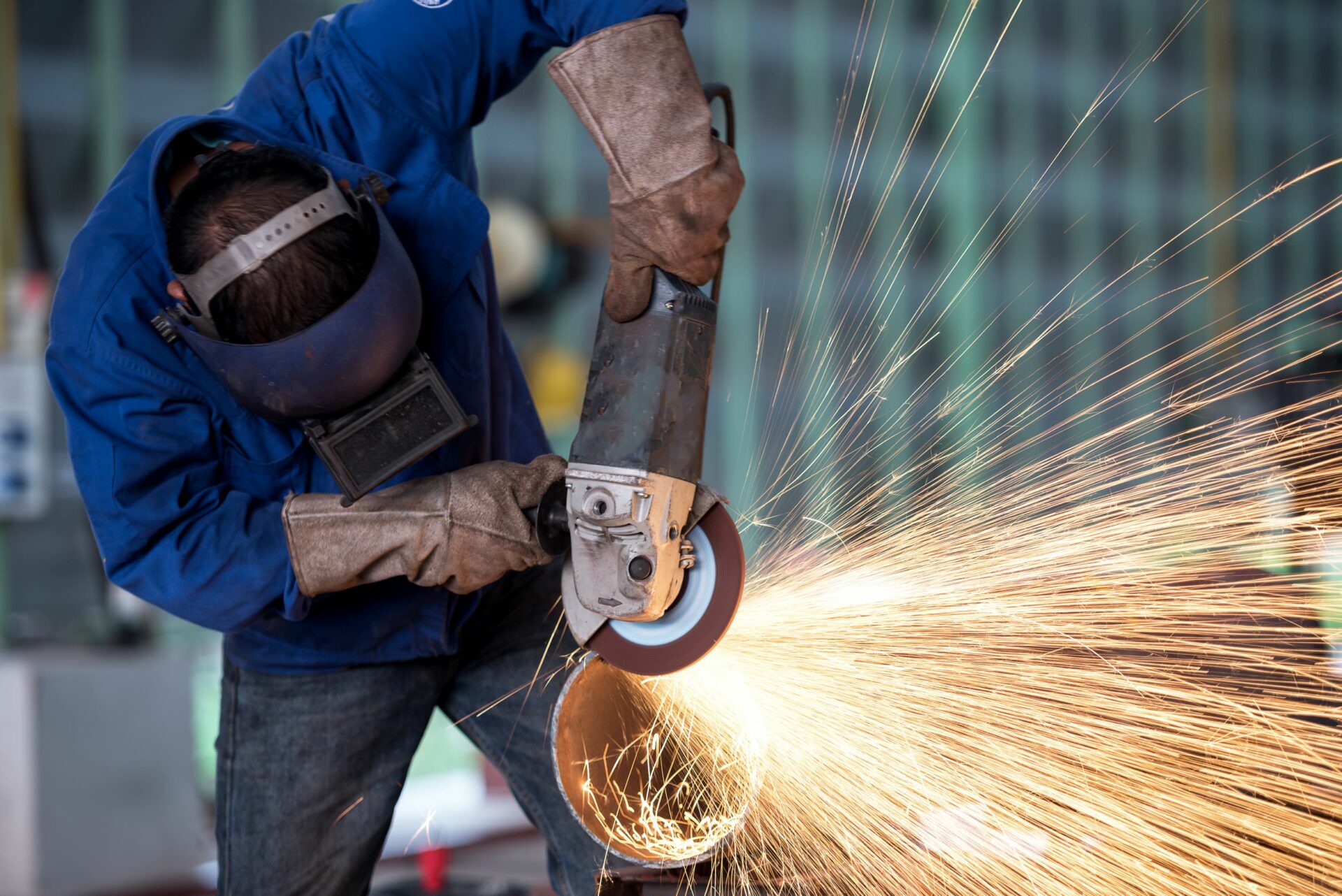Hand tools and power tools are common to see at any worksite. Common hand tools include hammers, saws, chisels, shovels, pry bars, screwdrivers, and wrenches. Common power tools include electric tools, drill motors, impact wrenches, jackhammers, soil tampers, grinders, powder actuated tools and more.
With all tools, there are some main safety precautions to keep in mind. These include:
- Maintain tools regularly
- Inspect tools prior to using
- Operate all tools according to manufacturer’s recommendations
- Use appropriate Personal Protective Equipment
- Use guards
- The greatest hazards posed by hand tools result from misuse and improper maintenance.
- The right tools should be utilized for the right job.
- Keep all tools in good working order.
- Any tools with frayed cords or without a grounding plug should be taken out of service.
- Do not use tools that you do not know how to operate.
- If a tool is defective, remove it from service, and tag it clearly “Out of service for repair”.
Personal Protective Equipment should be provided to employees exposed to the following hazards:
- Falling objects
- Flying objects
- Abrasive objects
- Splashing materials
- Harmful dusts
- Fumes, mists, vapors, or gasses
Hand tool safety may sound like it should be simple, but the following hazards can create a big risk when using hand tools. It’s best to apply these rules of thumb.
Sprung jaws on wrenches can increase the risk of slippage
- Mushroomed heads on hammers and other impact tools
- Wooden handles with splinters or cracks
- Cracked handles and loose heads
- Cracked saw blades
- Dull knives or other cutting tools
Make sure you’re selecting the right tool for the job
Use proper guarding
Belts, gears, shafts, pulleys, sprockets, spindles, drums, flywheels, chains, or other reciprocating, rotating, or moving parts of equipment should be guarded if these parts are exposed to contact by employees or otherwise create a hazard. Machine guards, as appropriate, must be provided to protect the operator and others from the following:
- Point of operation.
- In-running nip points.
- Rotating parts.
- Flying chips and sparks.
- Safety guards must never be removed when a tool is being used.
There are different types of guarding including fixed guards, interlocked guards, adjustable guards, and self-adjusting guards. Guarding should be at the point of operation.
There are so many tools to choose from, there is no way we can cover them all, but we’ve picked a few different types to provide some basic guidance on when using.
The following hand-held power tools must be equipped with a constant-pressure switch or control that shuts off the power when pressure is released: drills; tappers; fastener drivers; horizontal, vertical, and angle grinders with wheels more than 2 inches (5.08 centimeters) in diameter; disc sanders with discs greater than 2 inches (5.08 centimeters); belt sanders; reciprocating saws; saber saws, scroll saws, and jigsaws with blade shanks greater than 1 /4-inch (0.63 centimeters) wide; and other similar tools.
Electric Tools
To protect a worker from electrical shock, tools must have a 3-wire cord plugged into a ground receptacle or be double-insulated. Use of electric cords for hoisting or lowering is not permitted. Avoid standing in wet areas when using portable electrical tools. Do not let extension cords drag through water when using them. Have tools inspected by a qualified electrician before energizing them, if the tools have gotten wet. Ground Fault Circuit Interrupters (GFCIs) should be used on all tools that are not connected to a ground faulted outlet. Never use tools with damaged electrical connections, because electrocution may occur.
Woodworking Tools
When working with portable circular saws:
- The saw should be equipped with guards above and below the base plate or shoe
- Upper and lower guards should cover the saw to the depth of the teeth
- Lower guard must automatically return to the covering position over the blade teeth when tool is withdrawn from the work
- Mechanical or electrical power control provided for operator to cut off power
- Control is located on machine where operator does not have to leave his position at the point of operation
Jointers
- Hand-fed jointer with horizontal cutting head must have an automatic guard
- Should cover the working side of the fence or gage
- Automatically adjust and cover the unused portion of the head
Bandsaws
- All portions of saw blade must be enclosed or guarded except working portion between guide rollers and the table
- Bandsaw wheels must be fully encased
- Includes Bandsaws and Band Resaws
Pneumatic Power Tools
Pneumatic tools are powered by compressed air. Common types of these air-powered hand tools that are used in industry include buffers, nailing and stapling guns, grinders, drills, jack hammers, chipping hammers, riveting guns, sanders, and wrenches. Review the manufacturer’s instructions before using a tool. Always wear safety glasses or a face shield and where necessary, safety shoes or boots and hearing protection should be used. Post warning signs where pneumatic tools are used. Set up screens or shields in areas where nearby workers may be exposed to flying fragments, chips, dust, and excessive noise.
- Pneumatic power tools shall be secured to the hose in a positive manner to prevent accidental disconnection.
- Safety clips or retainers shall be securely installed on pneumatic impact tools and on hose connectors.
- The manufacturer’s safe operating pressure recommendations for all fittings shall not be exceeded.
- Remember to “bleed down” pneumatic tools prior to disconnecting.
Again, these are just some key safety points for commonly used hand and power tools. If you need a comprehensive safety training for this topic, check out our DIY in-house training kit, or see our online training options. Feel free to contact us with any questions about hand and power tool safety or anything safety related. We are happy to help.
Give us a call at 866-627-3850 or email us at sales@jjsafetyllc.com to learn more.
